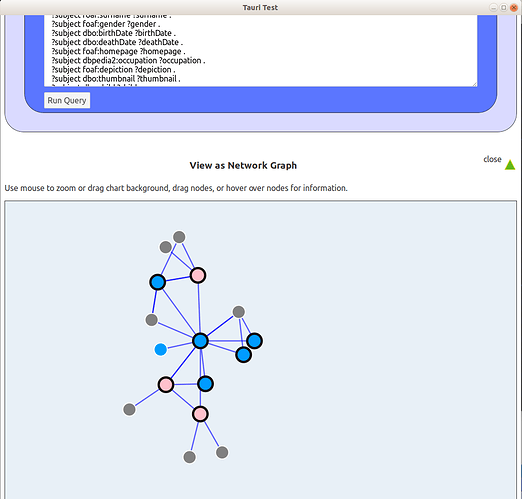It is interesting. I believe it’s an elaboration of the webview library, which first inspired Tauri. The small executable size is no doubt attractive, but I think it is still a trade-off: from my understanding, it’s small only because it uses the browser engine built into each OS, instead of bundling one, and that means it more or less loses some cross-platform consistency, in comparison to the Electron approach. I personally have no experience with either Tauri or Electron, but this kind of trade-off is not uncommon, e.g. the Homebrew vs MacPorts case, where the former’s philosophy is also to take advantage of OS built-in components, which makes it more “economical”, but comparatively less consistent. Of course different browsers seem to be converging nowadays, including Edge on Windows (used by Tauri). But there’s also Windows 7, on which Edge isn’t available, instead it’s MSHTML, probably not as modern and standardized. Win7 is no longer officially supported, but I doubt its user base is vanishing anytime soon, so there would have to be a decision for SN Browser to make, whether to give up on those users in terms of consistency.
I’m not making arguments for or against either approach, plus Tauri is still in alpha, so lots can change, this rambling just shows that I’m interested.
I also asked a few questions in Tauri’s Discord chat room the other day trying to get something clarified. Well, I haven’t got the chance to try things out myself to be sure, but from the discussion (in particular about using IndexedDB in Tauri), it seems that, because a Tauri app doesn’t have a standalone browser of its own that is dedicated to hosting the web app, trying to customize IDB or other browser-native data storage (to make it behave like a standalone desktop app that has its own config/profile directory) will likely be tricky, if possible: a Tauri app relying on IDB for data persistence will be essentially like a web app running in the system’s built-in browser, so its data will be stored in that browser’s own data directory.
So for SN Browser, which I suppose also makes use of various browser-native storage APIs, how can it customize its own data directory to make it feel like a standalone browser if taking the Tauri approach?
Now I haven’t looked into potential workarounds, maybe there are command-line flags for the browser engine to specify where exactly to store the data per web app? Indeed I’m mostly speculating here. Do you guys have experience with this sort of things?
![]() and I’m not the only one - see this post from the Rust forum:
and I’m not the only one - see this post from the Rust forum:
